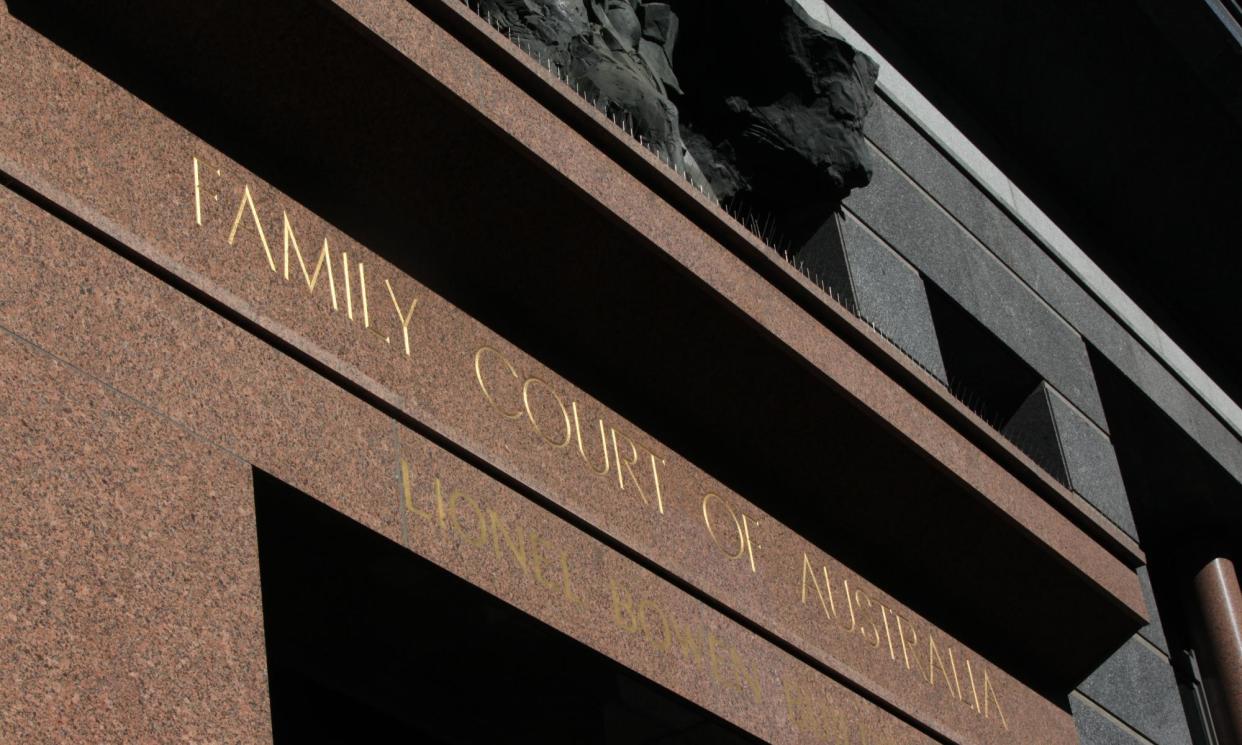Australia’s family court ‘keeps women unsafe’ and is used against them, inquiry hears

Family violence workers have told a parliamentary inquiry the family court system is “keeping women unsafe” and is being weaponised by perpetrators to subject victims to further harm.
The inquiry heard examples of perpetrators using the threat of family court proceedings to keep women in abusive relationships, including to instil fears they will be bankrupted or lose access to children.
In one case cited by Domestic Violence Advocacy Australia, the threat of family court was repeatedly used by a man, Matt, to keep control of his wife Charlotte*, who he had beaten and raped. Charlotte told DVAA she was terrified by the prospect of family court proceedings because they risked giving Matt unsupervised access to the children.
“Matt repeatedly used the threat of Family Court, draining the family asset pool against Charlotte,” DVAA said in its submission to the inquiry.
The DVAA secretary, Lara Glasson, described the court system as an “inaccessible and unsafe place” for victims to go to for support.
“If the committee is interested to know what is really keeping women living unsafe in their homes, unable to leave, it’s because the family court system keeps women bound and weighted down to their abuser,” Glasson said on Friday.
“Are women really free to leave family violence in Australia, if the court system is an inaccessible and unsafe place for victims of domestic violence to go to for support, [if] women are bound by orders made by the court?”
The warnings come just days after the domestic, family and sexual violence commissioner, Micaela Cronin, told the National Press Club that the family court, the child protection system and social security systems were being weaponised against women and children.
Friday’s inquiry heard from successive witnesses – mostly frontline support services, experts and advocacy groups – about failings including that parenting orders often conflicted with conditions set out in family violence orders, typically issued in state and territory magistrates courts.
The National Women’s Safety Alliance executive director, Katherine Berney, said a lack of enforcement was also undermining the strength of family violence orders.
“Orders must be more than just legal mechanisms,” Berney said. “They must offer real protection. There must be a commitment from all sides of government, law enforcement and the courts, to build a system that truly protects the Australians who need it most.”
The inquiry heard the lack of co-location of support services in court precincts made it more difficult to provide wraparound supports, including legal assistance and crisis accommodation, when a woman seeks help from the justice system.
It also heard that support services were hampered by a lack of funding, and that there were serious issues in enforcing the conditions of family violence orders.
A failure to share information between magistrates and family courts was also leading to poorer outcomes for women at risk of violence.
Terese Edwards, the chief executive of Single Mother Families Australia, told the inquiry there had been a “longstanding recommendation” to develop a live dashboard that would allow magistrates and courts to share information about all relevant proceedings.
She said the technology already existed. The current gaps in information sharing meant courts were operating oblivious to the detail of family violence orders or child protection orders.
“Also, the gap means that child protection orders are often missing and, in those child protection orders, they can be the voice of the child or professional who’s made a safety determination upon that child,” she said.


